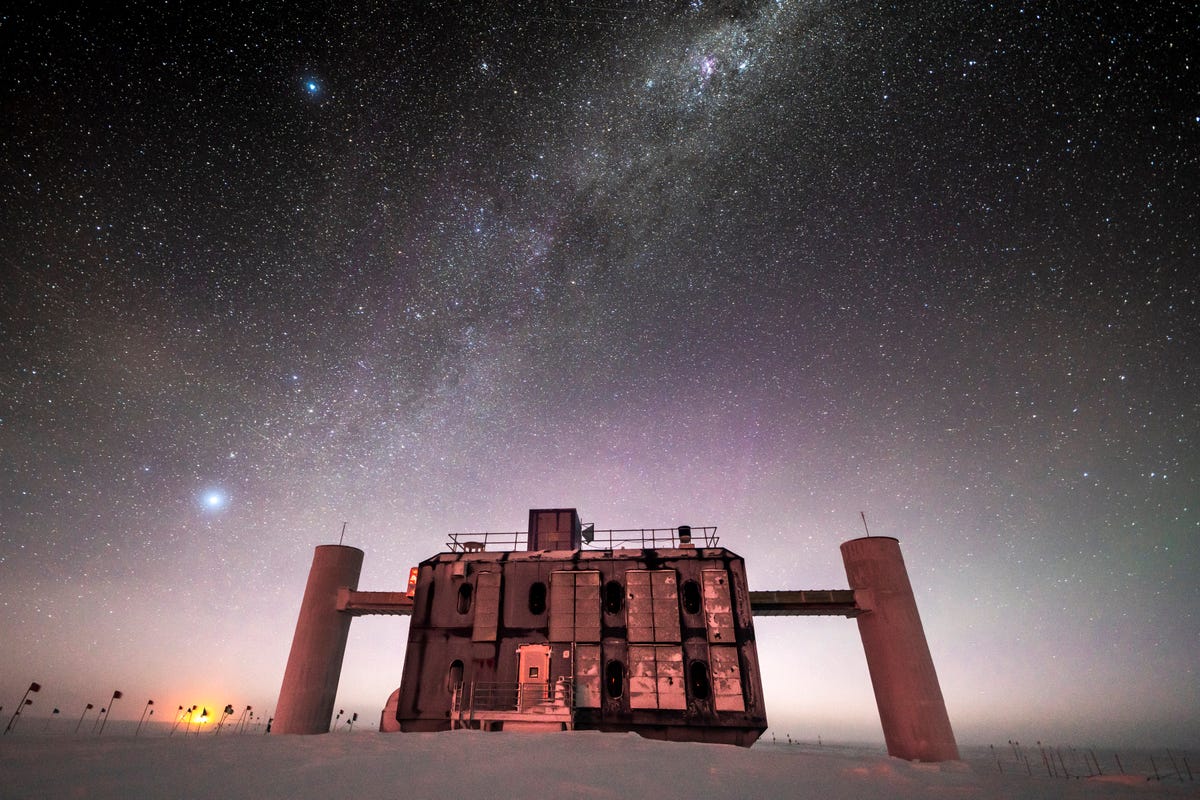Ghost Particles Crashing Into Antarctica Reveal Unseen Heart of Nearby Galaxy
About 47 million light-years from where you’re sitting, the center of a black-hole-laden galaxy named NGC 1068 is spitting out streams of enigmatic particles. These “neutrinos,” otherwise known as the notoriously elusive “ghost particles,” haunt our universe but leave little trace of their existence.
Immediately after coming into being, bundles of these invisible bits plunge across the cosmic expanse. They whisk by bright stars we can see and zip past pockets of space teeming with marvels we’re yet to discover. They fly and fly and fly until, occasionally, they crash into a detector deep below the surface of the Earth.
The neutrinos’ journey is seamless. But scientists patiently wait for them to arrive.
Nestled into about 1 billion tons of ice, more than 2 kilometers (1.24 miles) beneath Antarctica, lies the IceCube Neutrino Observatory. A neutrino hunter, you might call it. When any neutrinos transfer their party to the frigid continent, IceCube stands ready.
In a paper published Friday in the journal Science, the international team behind this ambitious experiment confirmed it has found evidence of 79 “high-energy neutrino emissions” coming from around where NGC 1068 is located, opening the door for novel — and endlessly fascinating — types of physics. “Neutrino astronomy,” scientists call it.
It’d be a branch of astronomy that can do what existing branches simply cannot.

Front view of the IceCube Lab at twilight, with a starry sky showing a glimpse of the Milky Way overhead and sunlight lingering on the horizon.
Martin Wolf, IceCube/NSF
Before today, physicists had only shown neutrinos coming from either the sun; our planet’s atmosphere; a chemical mechanism called radioactive decay; supernovas; and — thanks to IceCube’s first breakthrough in 2017 — a blazar, or voracious supermassive black hole pointed directly toward Earth. A void dubbed TXS 0506+056.
With this newfound neutrino source, we’re entering a new era of the particle’s story. In fact, according to the research team, it’s likely neutrinos stemming from NGC 1068 have up to millions, billions, maybe even trillions the amount of energy held by neutrinos rooted in the sun or supernovas. Those are jaw-dropping figures because, in general, such ghostly bits are so powerful, yet evasive, that every second, trillions upon trillions of neutrinos move right through your body. You just can’t tell.
And if you wanted to stop a neutrino in its tracks, you’d need to fight it with a block of…
Read More: Ghost Particles Crashing Into Antarctica Reveal Unseen Heart of Nearby Galaxy
